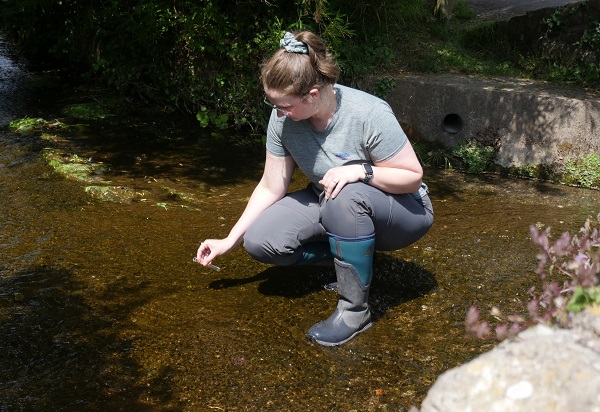HIGH levels of water pollution were found in Fishponds and Eastville waterways in tests carried out this summer.
Volunteers took samples of water from the River Frome and its tributaries in July for this year’s RiverBlitz campaign by the Bristol Avon Rivers Trust.
Samples were taken in 32 places between the South Gloucestershire boundary at Lincombe Barn Woods and the bridge under the M32 at the Stapleton Road end of Eastville Park.
As well as the Frome they included the Fishponds Brook near Everest Road, the Begbrook and a stream in Vassalls Park.
The volunteers measured levels of nitrate and phosphate pollutants washed into the river.
Levels of phosphates were high in 29 out of the 32 samples, medium in two and low in just one.
Nitrate pollution levels were high in 11 samples, medium in 18 and low in three.
Excess levels of nitrate and phosphate nutrients – which enter rivers from sources including agricultural fertilisers, manure, sewage discharges and urban water run-off – are bad for rivers as they can cause excessive growth of plants and algae that reduces oxygen, blocks sunlight and can suffocate fish and other animals.
The volunteers also recorded observations of wildlife, invasive species and rubbish dumped in the river.
They saw plastic bags, glass, a wheel and a motorbike fuel tank as well as invasive Himalayan balsam plants and poisonous hemlock.
Wildlife spotted included a little egret, kingfisher, freshwater shrimp and dragonflies, despite the pollution and low water levels during the long dry spell of summer weather.
This year’s RiverBlitz was the tenth carried out by the trust, which started the programme in 2016 to provide a snapshot of the health of waterways across the region in the Bristol Avon catchment.
‘Big picture’ of river health
In total, 303 volunteers collected 267 samples across the catchment – an increase on last year, when 130 people took part.
Comparing the results to figures from 2024, BART said there was a “clear contrast” between the two main pollutants.
The percentage of sites with high phosphate levels was well above the ten-year average of 40%, at 61% this year.
By contrast, the percentage of sites with high nitrate levels fell sharply, from 64% in 2024 to 40%, and was well below the average of 62%.
Across the region, BART said 70% of sites had high levels of at least one of the pollutants, below the average of 74% for the past ten years but above last year’s figure of 69%.
A spokesperson said: “In the run-up to this year’s Bristol Avon RiverBlitz in July, the region experienced a period of prolonged dry weather.
“As a result, river levels were low, which may have led to higher concentrations of nutrients in the reduced volumes of water.
“At the same time, the lack of rainfall meant fewer nutrients were being washed in from the surrounding landscape, and fewer sewage overflow events were likely to have occurred – potentially reducing other sources of nutrient input during this period.”
The trust says the results give a “vital big-picture view of river health” in the region.
BART community engagement and education lead Amy Wade said: “RiverBlitz is not just about collecting data, it’s about empowering people to take action for their local rivers.”
The results can be viewed online at bristolavonriverstrust.org/riverblitz.
